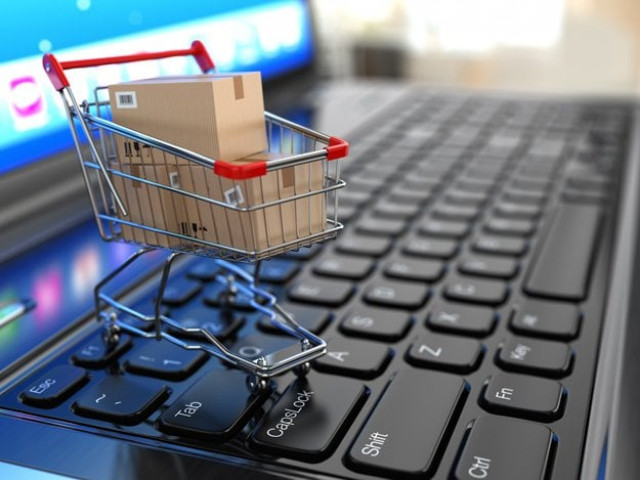Importance of e-commerce for Pakistan’s growth
Sector may continue growing, driven by internet penetration, middle class

The e-commerce sector in Pakistan has achieved significant growth over the past few years, thanks to the increasing internet and smartphone penetration.
According to a report of eMarketer, Pakistan’s e-commerce sales are projected to reach $2.1 billion by 2023, up from $1.2 billion in 2018. This article will explore the state of e-commerce sector, its challenges and opportunities, and how it is expected to evolve in the future.
E-commerce in Pakistan is still in its nascent stages, but it is growing rapidly. A report of the State Bank of Pakistan says the number of registered e-commerce merchants increased from 571 in 2015 to 1,516 in 2019. Similarly, the number of e-commerce transactions increased from 3.4 million in 2015 to 29.7 million in 2019.
Several factors are driving the growth of e-commerce. Firstly, the increasing use of smartphones and internet has made it easier for people to shop online.
We Are Social says in its report Pakistan has 97 million internet users, representing 38.7% of the population. Similarly, the number of mobile phone users in the country is expected to reach 161 million by 2025, up from 113.6 million in 2020, according to a report of GSMA.
Secondly, the Covid-19 pandemic has accelerated the growth of e-commerce, as people are opting for online shopping to avoid physical contact. Pakistan Telecommunication Authority says there was a 35% increase in e-commerce sales during the first wave of the pandemic.
Thirdly, the government of Pakistan has been taking steps to promote e-commerce. In 2019, the government launched the E-commerce Policy Framework, which is aimed at creating an enabling environment for the growth of e-commerce.
The policy includes measures such as simplifying the tax system, improving the logistics infrastructure and providing training and support to e-commerce entrepreneurs.
Despite its rapid growth, the e-commerce sector faces several challenges. One of the biggest challenges is the lack of trust among consumers.
According to a report of the Pakistan Software Export Board, only 18% of Pakistanis have ever made an online purchase, citing concerns of fraud and security as the main reason.
Another challenge is the lack of a robust logistics infrastructure. World Bank says in its report logistics cost accounts for around 18% of the value of goods in Pakistan, compared to 8-10% in developed countries. This is due to factors such as poor road infrastructure, a lack of standardised packaging, and inefficient customs procedures.
Payment infrastructure is also a major challenge. While digital payment solutions such as JazzCash and easypaisa have gained popularity, many people still prefer cash-on-delivery as a payment method. This poses a challenge to e-commerce businesses, as they have to deal with the risk of fraud and non-payment.
Despite the challenges, there are several opportunities. One of the biggest opportunities is the large and growing population of Pakistan. According to the United Nations, Pakistan is the world’s fifth-most populous country, with a population of over 220 million. This represents a huge potential market for e-commerce businesses.
Another opportunity is the growing middle class. McKinsey & Company says Pakistan’s middle class is expected to double by 2030, reaching 100 million people. This presents an opportunity for e-commerce businesses to target a growing market of consumers who have the purchasing power to buy online.
Moreover, the rise of social media presents another opportunity. Social media platforms such as Facebook, Instagram and TikTok are widely used in Pakistan, and many businesses have leveraged these platforms to reach potential customers.
E-commerce businesses can also use social media platforms to market their products and services and reach a wider audience.
Pakistan’s e-commerce sector is expected to continue growing in the coming years, driven by factors such as increasing internet penetration, a growing middle class, and government support. However, the sector also faces several challenges that need to be addressed to ensure its continued growth.
One area that needs improvement is the logistics infrastructure. The government and private sector need to invest in improving the road infrastructure, standardising packaging, and streamlining customs procedures to reduce logistics cost and improve efficiency of the supply chain.
Another area that needs improvement is the payment infrastructure. While digital payment solutions have gained popularity, more needs to be done to increase the adoption of these solutions and reduce reliance on cash-on-delivery.
This includes improving awareness of digital payment solutions, enhancing security measures, and providing incentives to consumers to use digital payments.
The writer is a member of PEC and has done Master’s in Engineering
Published in The Express Tribune, March 6th, 2023.
Like Business on Facebook, follow @TribuneBiz on Twitter to stay informed and join in the conversation.



















COMMENTS
Comments are moderated and generally will be posted if they are on-topic and not abusive.
For more information, please see our Comments FAQ